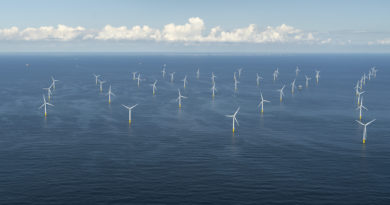
Empowering the sustainable and smart mobility transition in Europe
By 2050 the transport sector needs to reduce its emissions by 90%. This will require an unprecedented effort of the sector: an inevitable shift to zero-emission powertrains and renewable- and low-carbon transport fuels in a relatively short period of time. At the same time, digitalisation, automation, the emergence of shared, collaborative economy and platforms are all disruptive trends, shaking up the current mobility and transport landscape.
The European Commission’s Sustainable and Smart Mobility Strategy sets out how we are rethinking transport – through a simultaneous green and digital transformation of the sector.
We can no longer look at transport modes individually, but we need to ensure that users are offered the best mobility experience, combining the strengths of different modes of transport.
Many technologies are already there. Some are quickly penetrating markets, such as battery-electric vehicles. Others are less mature and still require market ramp-up, such as renewable and low-carbon fuels, or further development, such as zero-emission powertrains in maritime or aviation transport. All of them require a policy framework that is fit for purpose.
The last years have been very busy. In July 2021, the Commission published the so-called ‘Fit for 55’ package, with a broad set of initiatives addressing the need to reduce greenhouse gas emissions by 55% by 2030. In December 2021, we followed up with a suite of proposals for efficient and green mobility to ensure a future-proof and smart transport infrastructure policy. This summer, the Commission intends to come forward with a Greening Freight Policy Package, while also preparing new initiatives to boost digital mobility in the second half of this year.
Progress is visible. European Parliament and Member States already agreed on the ambitious revision of the CO2 standards for cars and vans: By 2035, emissions from all new cars and vans have to be reduced by 100% compared to the requirements in 2021.
There is also a review of the CO2 standards for heavy-duty vehicles underway. This overhaul of emission policy is complemented by the new Alternative Fuels Infrastructure Regulation, which will set binding targets for Member States for sufficient publicly accessible infrastructure.
Those policies on vehicles and infrastructure are flanked by measures to address user behaviour and incentivise the uptake of such vehicles, including through carbon-pricing in an extended EU Emissions Trading System or road charging through the revised Eurovignette Directive. Provisional agreement is also there on the ambitious revision of the Renewable Energy Directive, doubling the ambition on renewable transport fuels until 2030.
As part of the Fit for 55 package we are promoting the use of sustainable alternative fuels in aviation and waterborne transport through initiatives such as RefuelEU Aviation and FuelEU Maritime. This is complemented by measures such as the Renewable and Low-Carbon Fuels.
Alliance which is bringing together industry actors from all parts of the value chain to boost production and supply of such fuels in the aviation and waterborne sectors.
We have set the framework, and now it is for the market to deliver. But a powertrain and fuel switch alone will not do. Effective and efficient multi-modal mobility is key to this modernisation agenda.
The revision of our TEN-T policy will help build an effective EU-wide and multi-modal network of rail, inland waterways, short sea shipping and inland ports, airports and terminals, addressing capacity bottlenecks and hurdles to multi-modality.
Laying out the physical infrastructure, aptly supported by European funding such as under the Connecting Europe Facility, is one side of the coin. The other one concerns the layout of an interoperable digital and data infrastructure: Facilitating access, pooling and sharing of mobility and transport data is a key enabler of better mobility services, for the benefit of the user and an optimal use of transport system capacities alike, both for freight and passenger transport. The ongoing revision of the Directive on Intelligent Transport Systems is the first step on our journey towards fully connected, cooperative and automated (multi-modal) mobility. The Commission also intends to develop a common European mobility data space in the longer-term to ensure a better level playing field for data-driven mobility services.
In the end, it is the consumer who decides. Digital tools, such as multimodal digital mobility services, help passengers compare different travel options, choices and prices and raise awareness about the most sustainable mobility solutions. Here, current market practice is far from being developed, lacking attractive services for passengers. This is why we are working on a new initiative on Multimodal Digital Mobility Services for later this year, addressing the interaction of operators and service providers, standards and interfaces.
This is a positive agenda for the transformation of the transport sector. Our policies will help to modernise the EU transport system and allow European companies to strengthen their competitive edge, while ensuring that no one is left behind in this transition.




